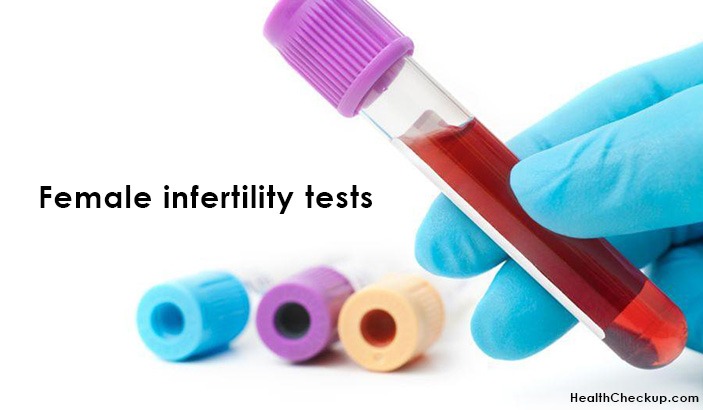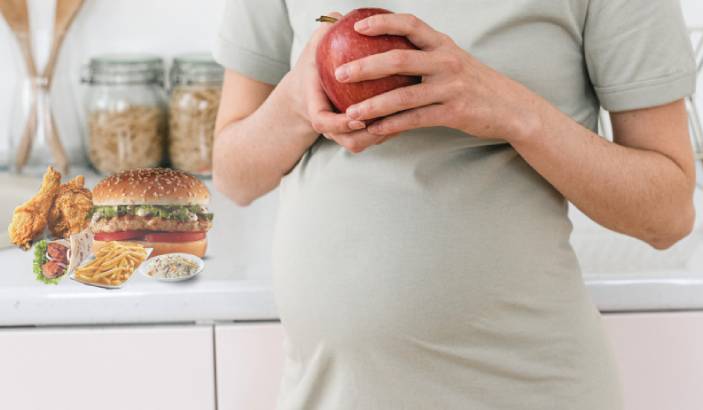Are you finding it difficult to conceive? Do you find that getting pregnant has become a real challenge? Do not worry, you are not alone – more than 20-25% of people around the world are facing this challenge. Infertility is of two types – male infertility and female infertility tests.
What is Female Infertility?
Female infertility is defined as not being able to get pregnant despite having frequent sex for at least 6 months to a year without the use of any contraceptive device. Infertility may be caused due to a single cause in either of the partners, or a combination of factors that may prevent a pregnancy from occurring or continuing. Fortunately, today, there are many safe and effective therapies for getting infertility cured. These treatments significantly improve the chances of becoming pregnant.
Diagnosing Female Infertility Tests
Most of the couples conceive naturally within one year of having regular unprotected sexual intercourse. Then, it is time you should visit your family physician or female infertility specialist if you have not conceived after one year of trying.
Remember that you should visit your family physician sooner if:
- You have any reason to be concerned about your fertility – if you have had treatment for cancer
- You are a woman of 36 and over
It should be remembered that female fertility testing and investigation can be quite a lengthy process, and female fertility decreases with age. The process of consultation and female infertility tests should start quite early.
Your doctor will be carrying out an initial assessment to investigate things that may be causing your infertility and may be able to advise you about what you ought to do next. It is always best for both the partners to visit their doctor, as fertility problems can affect a man or a woman, or sometimes both partners.
Studies have shown us that about 33% of infertility results from female infertility tests factors, and 33% due to male infertility, while in the rest, the cause is either unknown or a combination of male and female factors.
The cause of female infertility can be very difficult to diagnose, but many treatments are available. Treatment options depend on the underlying problem. Treatment isn’t always necessary as many infertile couples will go on to conceive a child spontaneously.
Symptoms of Infertility
The main symptom of infertility is the inability of a couple to get pregnant. This could be caused by a number of factors such as:
- A menstrual cycle that is too long – 35 days or more
- A menstrual cycle that is too short – less than 21 days
- An irregular or absent menstrual cycle that can be due to lack of ovulation
When should you see a doctor?
Your visit to the doctor would depend on the following factors:
- If you are in your early 30s or younger, your doctor would recommend that you try to get pregnant for at least a year before you go in for any test or treatment.
- If you are between 35 and 40, you should discuss with your doctor after you have tried for six months.
- If you are older than 40, your doctor may like to begin testing or treatment immediately.
- If you have a history of irregular or painful periods, pelvic inflammatory disease, repeated miscarriages, or have undergone any cancer treatment earlier, or endometriosis.
What are the Causes of Female Infertility?
You will not be able to get pregnant if you fail to ovulate, your husband is not able to produce sperm, or if the Fallopian tubes are closed. Pregnancy is the culmination of the complex process of human reproduction and in women, a number of factors can disrupt this process at any step.
Female infertility Tests and diagnosis
If you have not been able to conceive within a reasonable period of time, you should seek help from your doctor for further evaluation and treatment of infertility.
These are some of the fertility tests for finding out female infertility:
- Ovulation home test: An ovulation home test can be used by women to help determine the time in the menstrual cycle when getting pregnant is most likely. The test detects a rise in luteinizing hormone (LH) in the urine. A rise in this hormone signals the ovary to release the egg. This at-home test is often used by women to help predict when an egg release is likely. This is when pregnancy is most likely to occur. These kits are easily available at most drug stores.
- Ovarian reserve testing: This test helps to determine the quality and quantity of eggs available for ovulation. Women who are at risk of a low egg supply may have to undergo this series of blood and imaging tests.
- Other hormone testing: Other hormone testing check levels of ovulatory hormones as well as thyroid and pituitary hormones that control the process of reproduction.
- Imaging tests: Pelvic ultrasound looks for uterine or Fallopian tube disease. Sometimes a hysterosonography is used to see the inside of the uterus that cannot be seen on a regular ultrasound.
Depending on your condition, you may have to undergo further tests such as:
- Other imaging tests: Your doctor may call for a hysteroscopy to check for uterine or fallopian tube problems.
- Laparoscopy: This minimally invasive surgery involves making a small incision beneath the navel and inserting a thin viewing device to examine your fallopian tubes, ovaries, and uterus. The Laparoscopy may identify endometriosis, scarring, blockages, or other irregularities of the fallopian tubes, and problems connected with the ovaries and uterus.
- Genetic testing: Genetic testing helps determine if there is a genetic defect causing infertility.
Risk Factors
There are certain factors that may put you at higher risk of infertility, including:
- Age: With advancing age, the quality and quantity of a woman’s eggs begin to decline and makes conception more challenging and increasing the risk of miscarriage.
- Smoking: Smoking increases your risk of miscarriage and ectopic pregnancy besides damaging your cervix and fallopian tubes. You should make it a point to stop smoking before beginning fertility treatment.
- Weight: If you’re overweight or considerably underweight, it may hinder normal ovulation.
- Sexual history: Sexually transmitted infections can cause fallopian tube damage. Having unprotected intercourse with multiple partners increases your chances of contracting a sexually transmitted disease (STD) that may lead to fertility problems later.
- Alcohol: Heavy drinking is linked with an increased risk of ovulation disorders and endometriosis.
Medically Reviewed By









